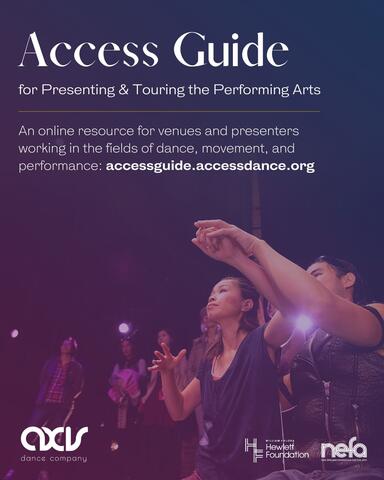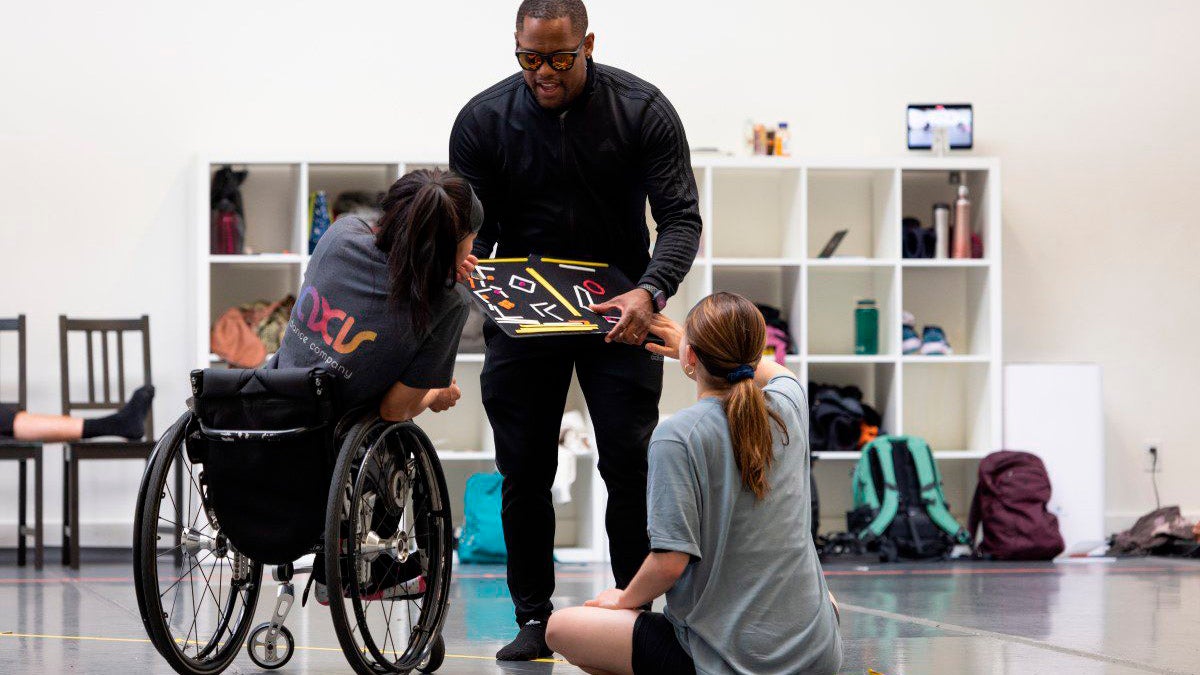Dance companies across the United States are challenging tradition—as a way to recalibrate the existing business model but also to grow and be more inclusive.

Some of these changes are a means of survival: the pandemic-induced financial upheaval experienced across the arts sector has necessitated that many performing arts organizations reconsider donor models, programming, and audience engagement. Other shifts are a means of envisioning a better future, with dance companies spearheading initiatives to broaden the art form and those that appreciate it.
Kellee Edusei, executive director of Dance/USA—one of Wallace’s partners—filled us in on the state of dance today and how their member companies are adapting to build a more resilient and inclusive future for dance.
This is the final article in a three-part conversation series with leaders in the performing arts to better understand the issues facing the industry in this current period of post-pandemic rebuilding. The previous discussions were with Theatre Communications Group Executive Director Teresa Eyring and League of American Orchestras CEO and President Simon Woods.
This interview has been edited for length and clarity.
Wallace: What trends are the dance ecosystem seeing in terms of audiences, programming, etc.?
Kellee Edusei: Like other sectors in the performing arts, dance is facing several challenges, including increased costs due to inflation, unpredictable shifts in funding caused by changes in philanthropic priorities, questions about the sustainability of the existing nonprofit business model, and challenges related to presenting and touring that were exacerbated by the pandemic. Some dance organizations are having to constrict their operations while still producing the same amount—and quality—of work, which takes additional time and requires the same, if not increased, human capacity.
Dance organizations are still seeing lower total audience numbers (as of FY2023). But the reduction in the number of audience members between 2019 and 2023 appears to be at least partially due to the reduced number of performances. In our 2023 member survey, companies on average performed 84% of the number of shows that they performed in 2019. While annual total audience numbers were down (by 21%), the total number of seats available was also down (by 22%).
In our recent research study, Dancing Through the Pandemic: Financial Changes in the U.S. Nonprofit Dance Ecosystem 2018-2022, we share a thoughtful exploration of the overall financial impact of the pandemic across the nonprofit dance ecosystem. While FY22 numbers revealed an upturn in revenue and expenses, the sector still had not returned to inflation-adjusted FY18 numbers. Higher unpredictability of revenue sources for organizations across all sizes, coupled with a cumulative inflation increase of 17%, is resulting in feelings of uncertainty across the sector. Halfway through 2024, dance organizations are still feeling the reverberations of the pandemic on their operations.

WF: How have your member organizations responded to these challenges, including the decline in audiences facing the entire performing arts sector?
KE: Anecdotally, we are learning from our ballet-based dance company members that, when theaters are at capacity, it’s often because a production is “familiar” to the audience, such as The Nutcracker. Or it offers a unique performance experience, like Germaine Acogny’s Rite of Spring, a monumental production touring the globe that is performed by dancers from fourteen African countries.
Another effective idea we have seen from our member companies is themed programming connected to holidays such as Halloween or Valentine’s Day. The Joffrey Ballet performed Frankenstein in October 2023 and several companies have presented Jekyll & Hyde.

Changes are being made across the dance ecosystem to ensure our industry is more inclusive. However, the pace and commitment varies from organization to organization.
— Kellee Edusei, executive director of Dance/USA
WF: What positive changes, for example with regard to equity, inclusion, and community involvement, have you witnessed within the dance community over the past few years?
KE: Changes are being made across the dance ecosystem to ensure our industry is more inclusive. However, the pace and commitment varies from organization to organization.
Some dance companies are working through what gender-inclusive practices mean for their organizations, audiences, and communities. Ballethnic has been navigating intersectionality and gender stereotypes related to performances that include male-identifying dancers on pointe and female-identifying dancers in traditional male roles, supporting and exploring the full spectrum of masculinity and femininity in ballet.
Others are focusing on increasing accessibility: AXIS Dance Company is creating a comprehensive “Access Guide for Presenting and Touring in the Performing Arts” which launched this summer, to help make dance spaces accessible to artists, workers, audiences, and others.
Another example is Pacific Northwest Ballet (PNB), which uses a lens of inclusion, diversity, equity, and accessibility to guide their performance, education, and community work. Two programs where this ethos is embodied include PNB’s New Works Initiative and the New Voices program, a year-long class in choreography for female-identifying students to encourage the production of works choreographed by women.
WF: How has Dance/USA helped to support this work?
KE: In 2018, together with Dance Theatre of Harlem and The International Association of Blacks in Dance, Dance/USA launched The Equity Project: Increasing the Presence of Blacks in Ballet. The program continues to engage senior leaders at the most prominent ballet companies in the U.S. at the intersection of the history of ballet, broader systems of power and privilege, and practical tools for change. The program’s format, rooted in peer-to-peer learning, makes the Equity Project a force multiplier for change within the dance ecosystem.
Dance/USA also offers fellowships to dance and movement-based artists who work at the intersection of social and embodied practices, as well as to archivists committed to culturally sensitive and community-based methods of preservation and archival work. We also have a leadership training program for early-career dance leaders with a specific focus on supporting individuals who identify as Native and BIPOC, as Disabled, and as LGBTQIA+

WF: What are some other creative solutions you’ve seen among your member organizations to address the times we’re living in?
KE: Cleo Parker Robinson Dance is forging innovative alliances with advocacy and healthcare partners to create opportunities for their community. The company’s Mental Health is Wealth paid internship program is an eight-week experience connecting high school students with creative industry organizations for on-job-access within diverse career fields. Students participate in a weekly workshop designed to provide foundational knowledge of mental health, wellness, and the arts with behavioral health professionals and arts facilitation team members.
I believe organizations that can figure out these types of relationships and do them well will succeed in the long run. They can help expand an organization’s footprint and ensure that their community is healthy and thriving.
Top photo: AXIS Choreo-Lab Fellow DJ Robinson, who is blind, shares a tactile map of a dance studio with AXIS dancers Julie Hasushi & Anna Gichan. Photo: Robert Suguitan




